Building The Dark Knight screenplay
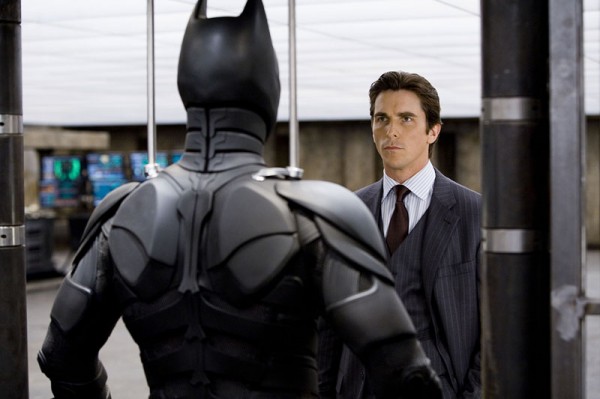
The Dark Knight is an expert example of building an active story around Theme, one of the main dramatic elements in the “Basic Story Map.”
- Download the FULL STORY MAP FOR THE DARK KNIGHT Here. (Note: The most recently revised map and complete analysis of The Dark Knight is in the E-Book: STORY MAPS: The Films of Christopher Nolan.)
In a movie, especially a superhero action thriller, there must be HIGH STAKES with SERIOUS CONSEQUENCES. Life or death. Loyalty or betrayal. Love or Duty.
In The Dark Knight, the screenwriters wisely push the story to the extremes of the conflict. To find those extremes, they began with Bruce Wayne/Batman’s character and mythology and used those elements to push him into an impossible situation.
Here are three “essential truths” of Bruce Wayne/Batman:
- Bruce Wayne has sworn to protect the people of Gotham City.
- Bruce’s alter-ego Batman is the only thing that can protect them.
- Bruce’s one rule is not to kill.
The screenwriters will push Bruce into a position where he has only two options:
- Give up his identity as Batman and turn himself in to the authorities, or
- Kill The Joker.
In other words: an impossible choice. This is what great drama is built upon.
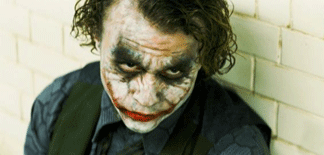
The glue that holds it together is Theme.
The Theme of The Dark Knight is “Desperation pushes men to act in self-destructive and chaotic ways.”
The writers use theme to create Bruce’s actions and the trials that he will face in his fight to achieve his goal. This is why I call it the “controlling” theme, because it can be used to essentially control a character’s actions and dialogue and guide the plot of your story. It maintains your crucial “story focus” that holds a Reader’s attention.
When in doubt about where to take the plot and what to make your character do…look for the answer in your theme.
- Download the FULL STORY MAP FOR THE DARK KNIGHT Here. For revised analyses and maps of the complete Dark Knight Trilogy and Christopher Nolan’s other films, see our E-Book:
The writers began by making a list of extreme actions (things that Bruce Wayne would normally never do) that would express this theme:
- Bruce puts faith in a politician: District Attorney Harvey Dent.
- Bruce ignores the advice of Jim Gordon, Alfred, Harvey Dent, Lucius Fox and Rachel and decides to give up his identity.
- Bruce tortures a suspect in an interrogation.
- Bruce steals Lucius’ technology and uses it to infringe on the privacy of all of Gotham’s citizens, whom he has sworn to protect with honor.
- Bruce lets Batman take the fall for murder.
It then becomes the screenwriters’ job to get Bruce into a position where he would logically (within the heightened “world” of a Batman movie) perform these actions. Since a great script focuses on a Protagonist that drives the story with their active decisions, it’s not hard to think that the above list of actions formed the basic spine of the plot, the signpost story beats that make up the “Full Story Map.”
This theme also forces other characters to take irrational action, for example:
- Harvey Dent tortures a paranoid schizophrenic for information.
- Jim Gordon fakes his own death, keeping the truth from his family.
And it “controls” the goal of the Antagonist, The Joker:
- The Joker hatches an intricate terrorist plot based on fear that pushes the mob, Batman and the civilians of Gotham City to the point of desperation.
Ultimately, the screenwriters used their unique theme to construct an active story with multiple lines of action and a large ensemble of characters that fills 2 hours and 24 minutes of screen time.
It also seems likely that it was a theme relevant to the times; the post-9/11 “War on Terror” era in America and abroad. The theme had urgency. And it took a well-known character that we’ve seen portrayed in several films into new dramatic territory.
In closing, if you know what your story is about – the idea you want to explore or what you want to say – then the blank page will not seem so daunting.
Good luck and happy writing!
Dan Calvisi
P.S. For more detailed analysis and lessons from the pros, please see my Story Maps book series…
 The E-Books Story Maps: How to Write a GREAT Screenplay and Story Maps: 12 Great Screenplays include Full Story Map analyses of 20 hit movies, primarily from the last decade.
The E-Books Story Maps: How to Write a GREAT Screenplay and Story Maps: 12 Great Screenplays include Full Story Map analyses of 20 hit movies, primarily from the last decade.
These successful films are great examples of professional screenwriting in many different genres and budget levels aimed at varied audiences. I stand by each title as a strong example of its genre and as a primer to learn the screenwriting craft at the level that you need to be: the “submission ready” tier that makes a good script into a GREAT script.

Purchase the Story Maps E-Books at a special bundled rate and get a free Story Map.

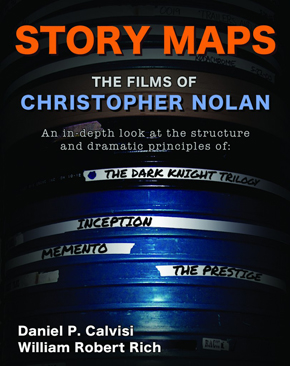
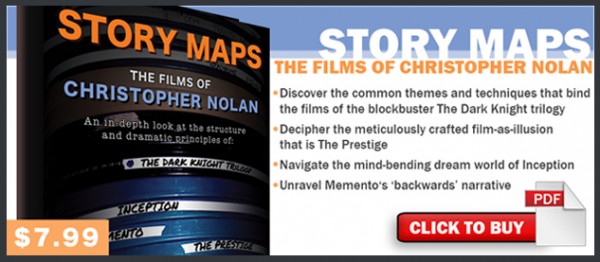
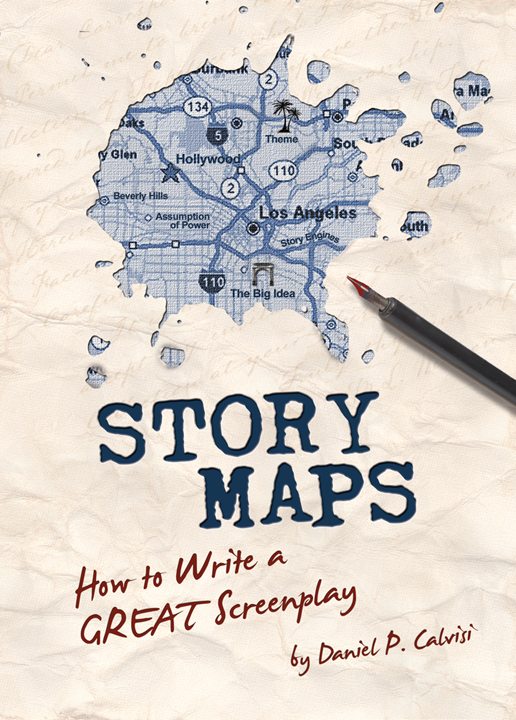
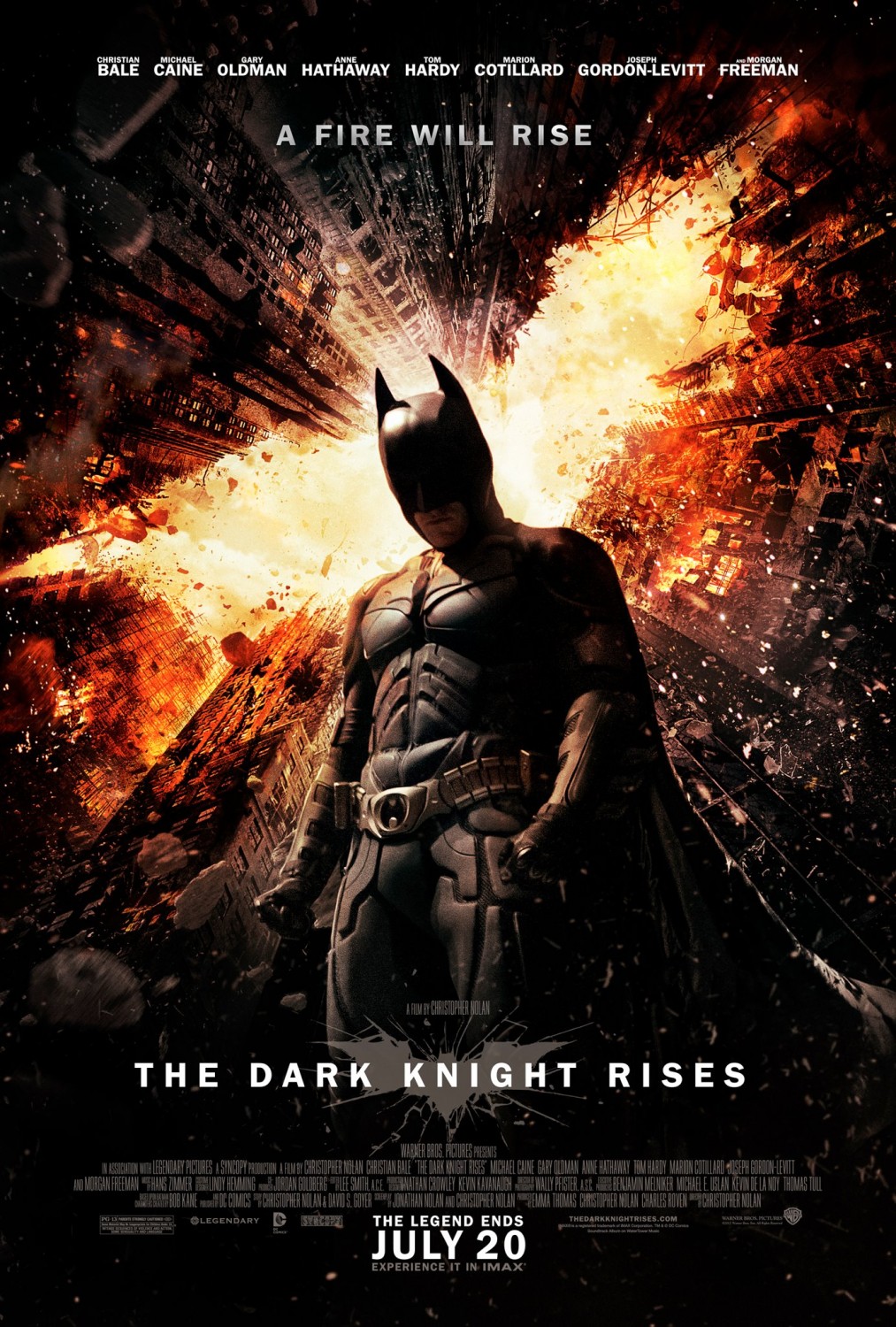
Hmmm, I see this is very old, so probably no one will see this comment, but I was struck by your observation:
The Theme of The Dark Knight is “Desperation pushes men to act in self-destructive and chaotic ways.”
This is an excellent point, and I’d add that there’s one more crucial example of this, one that Batman ignores, with rather devastating consequences for everyone.
The example I’m talking about is the mob’s decision to hire the joker, which is what really sets the whole story in motion; before the mob hires him, the joker doesn’t harm a single person who isn’t a mobster or other criminal of some kind:
At the beginning of the movie, the mob has been pushed, over the course of the preceding year, into a corner by Batman, Harvey Dent, and Jim Gordon. They’ve shut down almost all of their money laundering operations, and Batman has made the criminals afraid to go out at night. Even then, and even after a raid on their banks forces them to let their money launderer hide all their money and flee to China, they are STILL reluctant to hire the Joker, and they mostly dismiss his offer to help out of hand. It’s only when Batman brings Lau back, and Gordon and Dent decide to bring down the Mob once and for all, arresting hundreds of them, so that the entire mob, as an institution, is facing not just imminent, but more or less IMMEDIATE extinction, that one of them finally says “put word out, we hire the clown.” (and even then, his fellow monster gives him a bit of an “are you nuts?” look.)
As Alfred points put to Batman, it’s only after Batman has “squeezed them” and “hammered them to the point of desperation” that the mob hires the Joker -- an otherwise irrational and reckless action that doesn’t work out any better for them than it does for batman.
Thanks MM, nice points that add detail in support of my analysis. Fyi I have a revised map of The Dark Knight (with a revised Theme, interestingly enough) along with much more analysis in our new book, STORY MAPS: THE FILMS OF CHRISTOPHER NOLAN. Click on the “NOLAN BOOK” tab up top for more info.
Awesome, that’s just what I was looking for! You just saved me alot of digging around